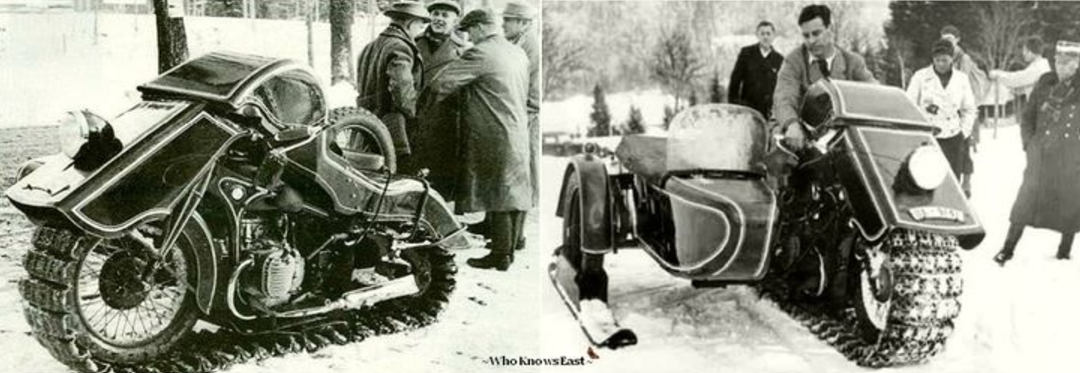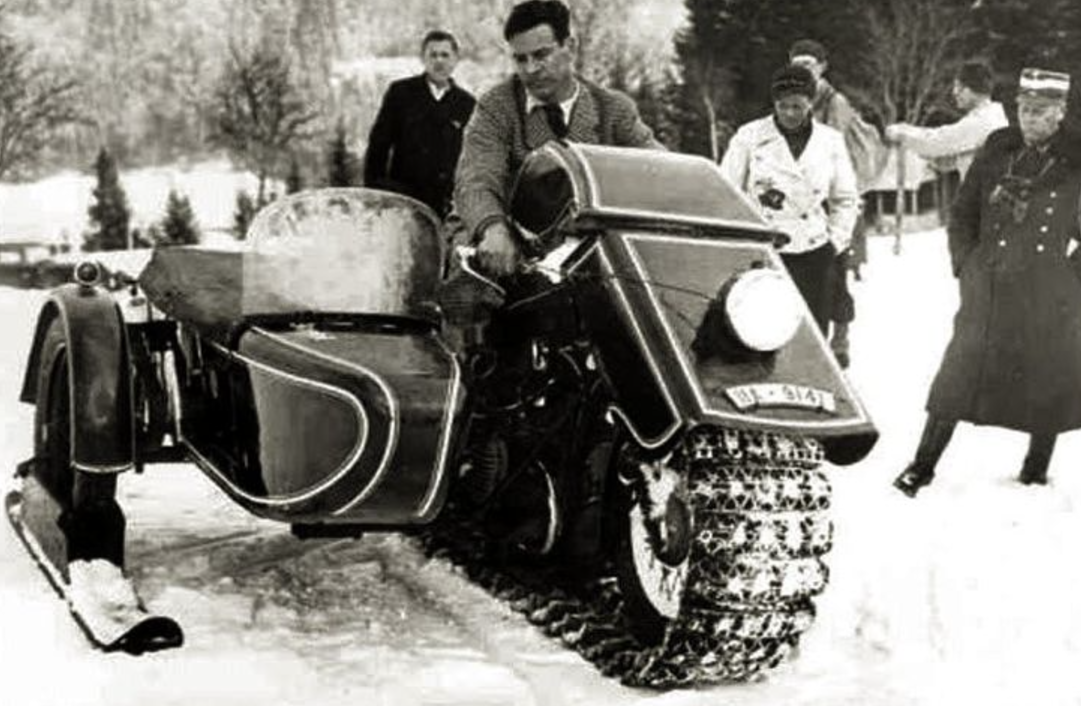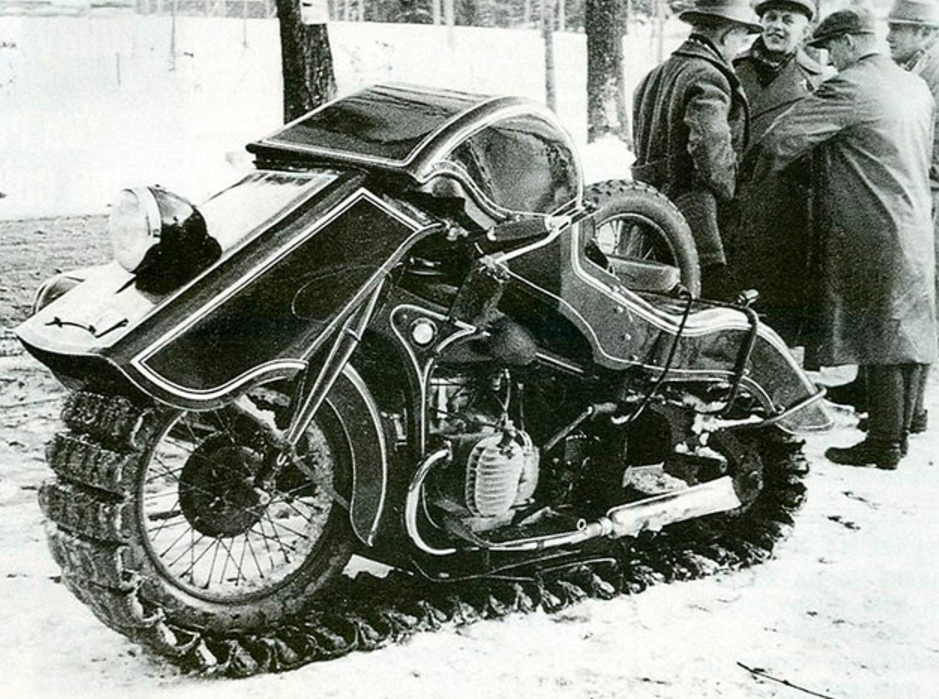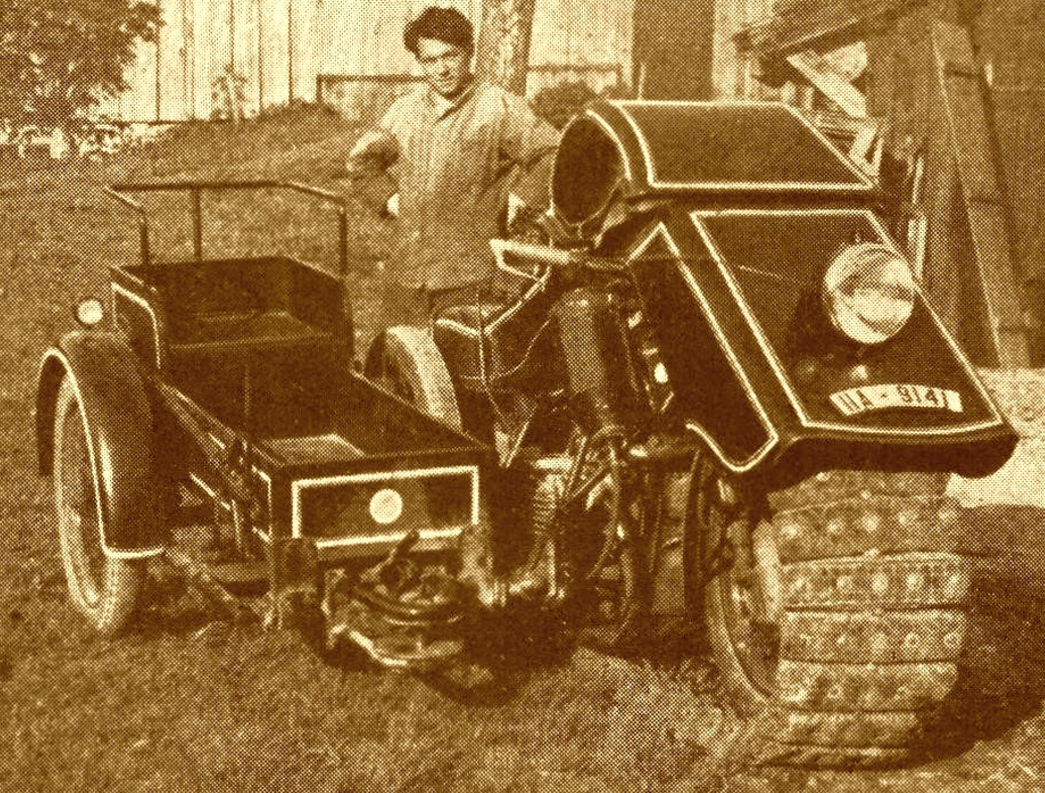The Riemerschmidt BMW Schneekrad, created in 1936, stands as one of the earliest known motorcycles. This unique machine, shrouded in mystery and intrigue, highlights the innovative engineering of its time. While details about its origin remain elusive, the Schneekrad provides a fascinating window into the intersection of military necessity and technological experimentation in pre-World War II Germany. Let’s explore this unique vehicle with archeology.dulichvn.net
The Origins of the Riemerschmidt BMW Schneekrad
1. A Blend of Fact and Speculation
Little is known about the exact origins of the Riemerschmidt Schneekrad. Some believe it was an experimental snowmobile powered by a BMW engine, created as a personal project by German engineer Riemerschmidt. Others argue that it was a commission by the Wehrmacht, intended for military use in challenging winter environments.

2. Context: Nazi Germany’s Alpine Preparations
In the 1930s, Nazi Germany was preparing for potential military operations in the Alpine regions. The need for a vehicle capable of traversing snow and mud efficiently was critical for success in these terrains. The Schneekrad, with its specialized design, was likely envisioned to address these demands.
3. The Name and Its Meaning
The term “Schneekrad” is derived from the German words Schnee (snow) and Krad, an abbreviation for Kraftrad (motorcycle). This name reflects its purpose as a snowcapable motorcycle, blending traditional mobility with winter adaptability.
See more: The Dragon’s Eye: A Natural Wonder in Lancashire, England
Engineering and Design of the Schneekrad
1. Powered by the BMW R-12 Engine
The Schneekrad utilized the engine of the BMW R-12, a reliable and robust motorcycle engine of its era. This engine was known for its durability and was widely used in military motorcycles during the 1930s and 1940s.

2. “Gleitkettenkraftrad” Concept
The Schneekrad was classified as a “Gleitkettenkraftrad,” or “slip-chain motorcycle.” This design integrated tracks or chains to enhance traction on snow and ice, allowing it to move efficiently in harsh winter conditions.
3. Equipped with a Steib TR-500 Sidecar
To increase its utility, the Schneekrad was paired with a Steib TR-500 sidecar. This addition likely provided extra storage or passenger capacity, making it a versatile vehicle for potential military operations.
Potential Uses and Abandonment
1. Winter Operations in the Alps
The Schneekrad was likely developed in anticipation of winter operations in the mountainous Alpine region. The challenges posed by snow, ice, and mud necessitated innovative transportation solutions.

2. Limited Production and Prototyping
Historical evidence suggests that only one prototype of the Schneekrad was ever built. This indicates the project may have been abandoned early, possibly due to technical challenges, impracticality, or shifts in military priorities.
3. Handling Remains a Mystery
One of the enduring questions about the Schneekrad is how well it handled in real-world conditions. Its unusual design likely posed challenges in terms of maneuverability and stability, which may have contributed to its limited development.
See more: The Bowder Stone: A Natural Wonder of the Lake District
The Legacy of the Riemerschmidt BMW Schneekrad
1. A Testament to Innovation
The Schneekrad represents an era of bold experimentation in engineering. Its design reflects the creativity and ambition of its creators, even if the project was ultimately short-lived.

2. Influence on Future Snowmobile Designs
Although the Schneekrad did not enter mass production, it may have inspired later snowmobile designs. Its combination of motorcycle technology and snow-specific adaptations paved the way for future innovations.
3. A Rare Artifact of History
As only one prototype is believed to have been built, the Schneekrad is a rare artifact of pre-war engineering. Its story continues to intrigue historians, military enthusiasts, and vehicle collectors.
Conclusion: The Fascination with the Schneekrad
The Riemerschmidt BMW Schneekrad is more than just a vehicle—it is a symbol of a bygone era of innovation and ambition. While much about its history remains uncertain, the Schneekrad continues to capture the imagination of those who study early snowmobile technology and military engineering.

CÁC TIN KHÁC
Mark Twain & Olivia Langdon: A 36-Year Love Story Filled with Laughter and Devotion
The Tollund Man: A 2,400-Year-Old Mystery Preserved in a Danish Bog
Skara Brae: Scotland’s Hidden Neolithic Village
Porta Nigra: The Hidden Depths of Trier’s Iconic Roman Gate